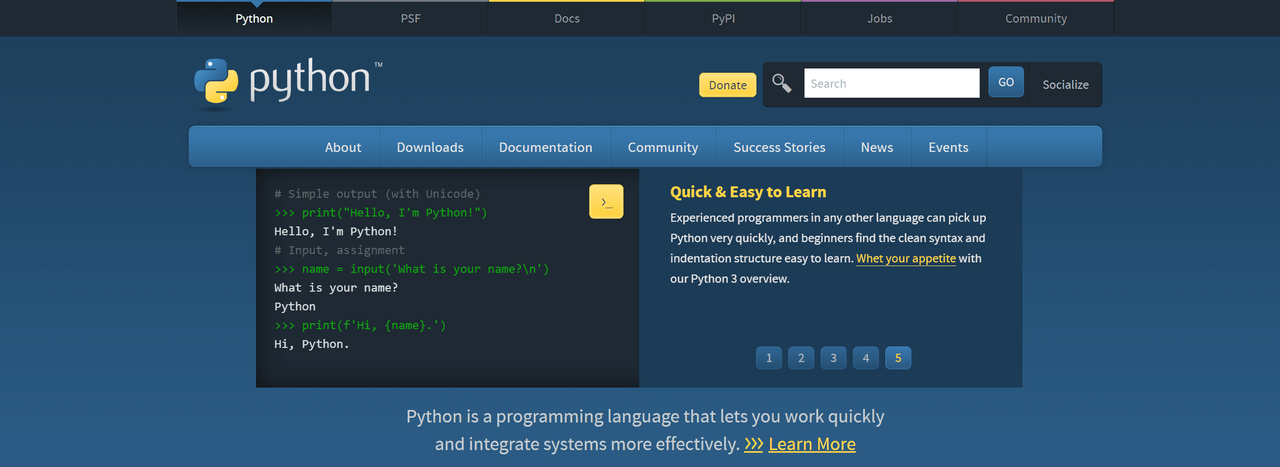Python Error Handling: A Developer's Complete Troubleshooting Guide
Key Takeaways:
- Master the anatomy of Python error messages to quickly identify and resolve issues
- Learn preventive coding practices that reduce common syntax and runtime errors
- Understand the difference between syntax errors, runtime errors, and logical errors
- Implement proper error handling techniques using try-except blocks
- Use modern development tools and linters to catch errors early in development
Understanding Python Error Types

Python errors generally fall into three main categories, each requiring different approaches for resolution:
1. Syntax Errors
Syntax errors occur when the Python interpreter cannot understand your code due to violations of the language's grammar rules. These errors prevent your code from executing and must be fixed before the program can run.
# Common syntax error example
if x > 5
print("x is greater than 5") # Missing colon after condition
# SyntaxError: invalid syntax
2. Runtime Errors (Exceptions)
Runtime errors occur during program execution when something unexpected happens. Unlike syntax errors, the code is valid but encounters problems during execution. For more details on handling these errors in production environments, check out our guide on solving common runtime errors.
# Common runtime error example numbers = [1, 2, 3] print(numbers[5]) # IndexError: list index out of range
3. Logical Errors
Logical errors are the most subtle type - the code runs without errors but produces incorrect results due to flawed logic in the implementation.
# Logical error example
def calculate_average(numbers):
total = sum(numbers)
return total / len(numbers) - 1 # Incorrect formula for average
Common Python Errors and Solutions
1. IndentationError
Python uses indentation to define code blocks, making proper spacing crucial.
# Incorrect indentation
def my_function():
print("This will cause an error") # Should be indented
# Correct indentation
def my_function():
print("This works correctly") # Properly indented
2. NameError
Occurs when trying to use a variable or function that hasn't been defined.
# Will raise NameError print(undefined_variable) # Correct usage defined_variable = "I exist" print(defined_variable)
3. TypeError
Happens when an operation is performed on an incompatible data type.
# TypeError example number = "5" result = number + 10 # Can't add string and integer # Correct approach number = "5" result = int(number) + 10 # Convert string to integer first
Modern Error Handling Best Practices
Using Try-Except Blocks
According to Python Software Foundation's 2024 developer survey, proper exception handling is among the top 5 practices that distinguish production-ready code from prototype code. Learn more about implementing robust retry mechanisms in our guide on handling failed HTTP requests in Python.
def safe_division(a, b):
try:
result = a / b
except ZeroDivisionError:
print("Error: Division by zero!")
return None
except TypeError:
print("Error: Invalid input types!")
return None
else:
return result
finally:
print("Division operation completed")
Implementing Custom Exceptions
Creating custom exceptions helps in handling application-specific errors more effectively:
class InsufficientFundsError(Exception):
"""Raised when a withdrawal exceeds the available balance"""
def __init__(self, balance, withdrawal_amount):
self.balance = balance
self.withdrawal_amount = withdrawal_amount
self.message = f"Cannot withdraw ${withdrawal_amount}. Balance is ${balance}"
super().__init__(self.message)
def withdraw(balance, amount):
if amount > balance:
raise InsufficientFundsError(balance, amount)
return balance - amount
Modern Development Tools for Error Prevention
Leverage these tools to catch errors before they reach production:
- Pylint (2024 version): Static code analyzer that identifies programming errors and coding standard violations. Install via
pip install pylint - mypy: Optional static type checker for Python. Read more at mypy documentation
- VS Code Python Extension: Provides real-time error detection and debugging capabilities
Advanced Error Handling Techniques
Context Managers
Use context managers to handle resource management and cleanup:
class DatabaseConnection:
def __enter__(self):
# Set up database connection
print("Database connected")
return self
def __exit__(self, exc_type, exc_value, traceback):
# Close database connection
print("Database connection closed")
with DatabaseConnection() as db:
# Work with database
pass # Connection automatically closes after block
Handling Asynchronous Errors
For modern async Python applications, use proper error handling in async code:
import asyncio
async def fetch_data():
try:
async with aiohttp.ClientSession() as session:
async with session.get('https://api.example.com/data') as response:
return await response.json()
except aiohttp.ClientError as e:
logging.error(f"Network error: {e}")
raise
Debugging Strategies
According to the 2024 Python Developers Survey, these are the most effective debugging approaches:
- Using logging instead of print statements
- Leveraging IDE debugging tools
- Implementing proper error tracking in production
Setting Up Proper Logging
import logging
logging.basicConfig(
level=logging.DEBUG,
format='%(asctime)s - %(name)s - %(levelname)s - %(message)s',
handlers=[
logging.FileHandler('debug.log'),
logging.StreamHandler()
]
)
logger = logging.getLogger(__name__)
try:
# Your code here
result = complex_operation()
except Exception as e:
logger.error(f"Operation failed: {str(e)}", exc_info=True)
From the Field: Developer Perspectives
Real-world experiences shared by engineers reveal several recurring patterns in how developers encounter and handle Python errors. One of the most frequently cited challenges is the tendency to overlook proper problem decomposition. Experienced developers emphasize that breaking down complex problems into manageable components is crucial for both error prevention and maintenance. This becomes particularly evident in function and class design, where many beginners report struggling with creating modular, reusable code instead of writing linear programs.
Technical teams have identified several common pitfalls in error handling practices. Notable among these is the improper use of try-except blocks, with many developers initially catching all exceptions indiscriminately instead of handling specific error types. Senior engineers particularly warn against using blank except clauses, as they can mask important errors like KeyboardInterrupt. Instead, they recommend explicitly catching expected exceptions and handling each appropriately.
Discussions in developer forums highlight interesting debates around best practices. While some advocate for extensive use of print statements for debugging, others strongly recommend more sophisticated approaches like using breakpoints and proper logging. There's also ongoing discussion about the balance between writing "clever" code versus maintaining readability, with most experienced developers favoring clear, explicit code over complex one-liners.
The community particularly emphasizes the importance of understanding Python's reference behavior with mutable objects, a concept that frequently confuses newcomers. Developers share how misunderstanding object references can lead to subtle bugs that are difficult to track down, especially when working with lists and dictionaries. This extends to function arguments, where mutable default arguments are frequently cited as a source of unexpected behavior.
Conclusion
Effective error handling is crucial for building robust Python applications. By understanding different types of errors, implementing proper handling mechanisms, and utilizing modern development tools, you can significantly improve your code's reliability and maintainability. Remember that errors are not just obstacles but opportunities to make your code more resilient.
For more information, check out these resources:





